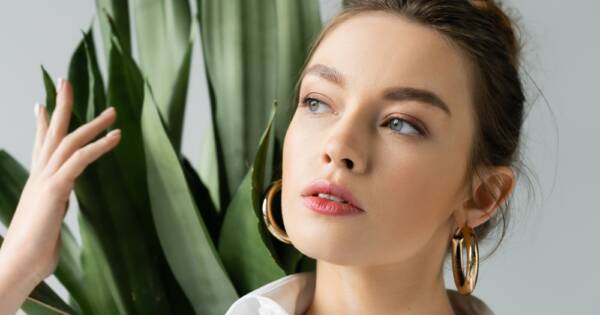Makeup trends evolve constantly, but one approach stands out for its timeless appeal: contrast makeup. This technique revolves around balancing light and dark shades to enhance facial features, creating a striking yet harmonious look. Whether you’re looking to amplify your natural beauty or experiment with bold aesthetics, contrast makeup offers endless possibilities. However, as with all beauty trends, finding the right approach for your unique features takes careful consideration.
What Is Contrast Makeup?
At its core, contrast makeup focuses on creating visual interest by emphasizing differences in tone, color, and texture. It leverages principles of light and shadow, often using bold contrasts to make certain areas of the face stand out.
Contrast can be achieved in several ways:
- Color contrasts: Pairing light, neutral tones with bold, vibrant hues.
- Matte vs. shimmer: Using matte shades alongside luminous, shimmering products.
- Light and shadow: Incorporating contouring and highlighting to define features.
A well-executed contrast makeup look draws attention to specific facial areas, such as the eyes, lips, or cheekbones. This versatility means it can work for a variety of styles, from soft and natural to dramatic and editorial.
How to Identify the Best Contrast for Your Features
Finding your ideal contrast makeup style involves understanding your features and preferences. Here are some key factors to consider:
1. Skin Tone and Undertone
Your skin’s tone (light, medium, or dark) and undertone (warm, cool, or neutral) are crucial in selecting complementary shades. For example:
- Warm undertones (golden, peachy): Work well with earthy tones like terracotta, bronze, and rich reds.
- Cool undertones (pink, bluish): Pair beautifully with jewel tones, icy hues, and cool reds.
- Neutral undertones (balanced): Can pull off a wider variety of colors, from warm golds to cool pastels.
Contrast makeup often plays on extremes, such as pairing light shades with darker or bolder tones. To make this work for your skin tone, always test shades to ensure they flatter rather than overpower your natural coloring.
2. Eye Color
Contrast can be especially effective when applied to eye makeup. To make your eyes pop:
- Brown eyes: Shades like teal, purple, and gold offer striking contrast.
- Blue eyes: Earthy browns, rust tones, and warm coppers create a dynamic look.
- Green or hazel eyes: Plum, burgundy, and deep greens enhance these tones beautifully.
Pairing contrasting eyeshadows with complementary eyeliner and mascara can complete the look.
3. Face Shape
Contouring and highlighting are foundational in contrast makeup. They use light and shadow to enhance your face shape:
- Round faces benefit from sharper contour lines to elongate the face.
- Oval faces can play with a balanced approach, enhancing cheekbones without over-sculpting.
- Square or angular faces soften with diffused highlights and subtle shading.
Experiment with placement to find what flatters your unique structure.
4. Lip Preferences
For lips, contrast makeup often involves bold statement colors:
- Light to medium skin tones: Bright reds, deep plums, or coral shades create vivid contrast.
- Deeper skin tones: Rich berries, chocolate browns, and vibrant oranges stand out beautifully.
A classic bold lip paired with neutral eyes and cheeks is a foolproof way to master the art of contrast.
Techniques for Creating the Perfect Contrast Makeup Look
Once you understand your features, use these techniques to craft your ideal contrast makeup style:
Layering and Blending
Achieving a balanced look requires skillful blending. For example:
- Eyeshadow palettes often include light, medium, and dark shades. Use the light shade as a base, a medium tone for transitions, and the darkest shade for defining the crease or outer corner.
- Contouring should be diffused enough to look natural yet defined enough to create dimension.
Playing with Texture
Incorporating both matte and shimmer textures adds another layer of contrast. A matte face paired with glossy lips, for instance, creates a dynamic and modern aesthetic.
Using Color Theory
Referencing a color wheel can help you choose shades that contrast effectively. Complementary colors (those opposite each other on the wheel) like blue and orange or purple and yellow deliver high-impact results.
Balancing Bold and Neutral Elements
The key to wearable contrast makeup is balance. If you choose a bold eye look, keep the lips neutral, and vice versa. This ensures the overall look is striking without being overwhelming.
Experimenting Safely with Contrast Makeup
When exploring contrast makeup, it’s important to approach new products and techniques cautiously:
- Test products: Always test products on your skin for compatibility, especially if you have sensitive skin.
- Gradual steps: Start small, such as adding a pop of color to your eyeliner or experimenting with a slightly bolder lipstick before committing to a full contrast look.
- Seek professional advice: Makeup artists or beauty consultants can offer tailored advice for your skin tone and features.
Remember, makeup should be a form of self-expression—there’s no right or wrong way to explore contrast as long as you feel confident and comfortable.
Grab Your Brushes!
Contrast makeup is an exciting way to explore your creative side and highlight your natural features. By playing with light and shadow, color, and texture, you can craft a look that’s uniquely yours. While finding the right combination may take some experimentation, the journey is part of the fun.
Always keep your skin tone, facial structure, and preferences in mind, and don’t hesitate to try new ideas. Ultimately, contrast makeup is about balance—letting your individuality shine through while embracing boldness and sophistication.





